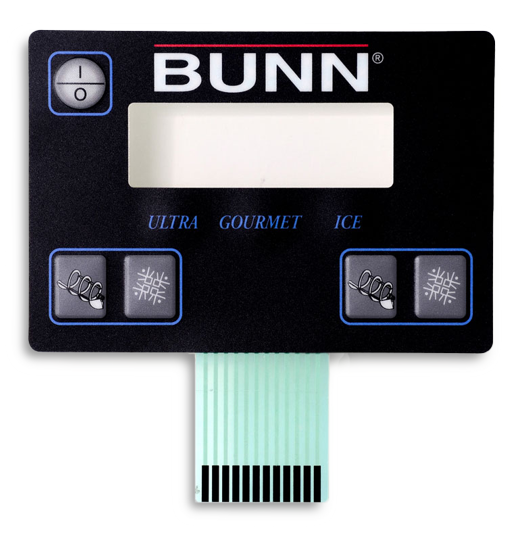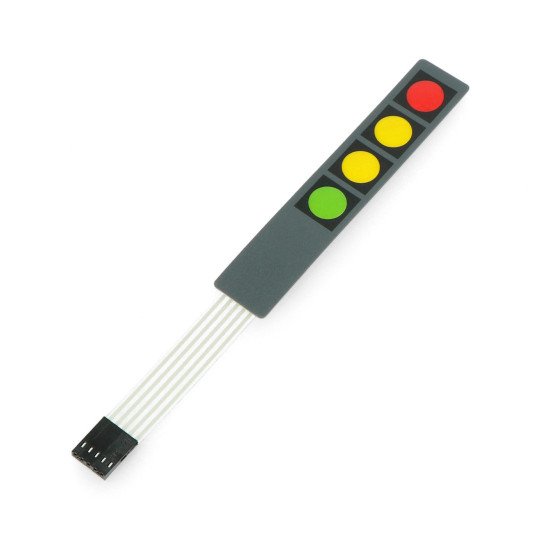Comprehending the Value of Membrane Switch in Modern Electronic Devices and Their Applications
Membrane switches over function as a crucial part in contemporary electronics, supplying a reliable interface for user interaction. Their personalized and light-weight nature makes them appropriate for an array of applications across varied sectors. Understanding their crucial parts and benefits can supply insights right into their growing relevance. As innovation remains to breakthrough, the development of Membrane changes elevates concerns about their future applications and style technologies. What lies in advance in this dynamic area?

What Are Membrane Switches?
Membrane buttons are essential elements in modern electronics, functioning as customer interfaces that assist in communication in between customers and gadgets. These buttons include numerous layers, including a visuals overlay, a sticky layer, and a circuit layer, all of which collaborate to create a sturdy and functional interface. The design enables a flat, inconspicuous solution that can be personalized pertaining to dimension, form, and visual look, making them appropriate for different applications, from customer electronic devices to medical tools. The tactile responses offered by Membrane switches enhances user experience, while their resistance to dust and moisture makes them ideal for testing atmospheres. Membrane switches can include features such as backlighting and published graphics, even more increasing their usability. Their versatility and robustness make them a preferred selection in markets where dependability and ease of use are critical, ultimately adding to the seamless procedure of modern-day electronic tools.
Key Components of Membrane Switches Over
While various components contribute to the capability of a membrane button, 3 main layers play significant roles in its design and procedure. The top layer, normally made from a long lasting polymer, works as the user interface for customer communication, usually featuring printed graphics and icons. Below this is the spacer layer, which keeps the required distance in between the top layer and the circuit layer. This spacer layer warranties that the button turns on just when pressed, preventing unexpected inputs. Lastly, the circuit layer includes conductive traces that complete the electric circuit when the leading layer is depressed. These traces can be made from numerous products, consisting of copper or silver. With each other, these parts produce a robust and trustworthy device that is compact and flexible, ideal for a wide variety of digital applications, from family appliances to clinical devices. Recognizing these crucial elements is vital for appreciating the overall functionality of Membrane buttons.
Advantages of Making Use Of Membrane Switches Over

Membrane Switch Production Process
Recognizing the Membrane switch manufacturing procedure exposes the intricate steps included in creating these crucial parts. The procedure generally starts with the style stage, where requirements and layouts are developed using specialized software. Following this, the visuals overlay is printed on a versatile substrate, frequently making use of high-resolution printing methods to assure clarity and precision.Next, the glue layers are used, which offer to bond the different elements together. The circuit layers, made from conductive inks or materials, are after that published onto a different substrate. These layers are meticulously lined up and laminated flooring to create a functional switch.After setting up, the switches go through evaluating to validate functionality and durability. Quality control procedures are applied throughout the process to determine and rectify any type of defects. Lastly, the completed Membrane buttons are packaged and gotten ready for circulation, ready to satisfy the needs of contemporary digital applications.
Applications of Membrane Switches Over in Different Industries
Membrane buttons are significantly made use of across different industries, especially in clinical equipment and customer electronic devices. In the medical field, they provide dependable control interfaces for devices that call for exact procedure. In a similar way, in customer electronics, these switches boost user communication by using receptive and sleek interfaces.
Medical Equipment Control
Numerous contemporary clinical devices use Membrane buttons for structured operation and boosted customer interaction. These switches provide a reliable, resilient user interface for a selection of applications, consisting of analysis devices, person surveillance systems, and surgical instruments. Their personalized styles enable specific layouts that can suit the unique requirements of health care professionals, making certain instinctive navigation and reliable access to necessary features. Additionally, Membrane switches are resistant to impurities, making them ideal for sterile environments. The responsive comments they use can improve customer self-confidence, minimizing the risk of errors throughout essential medical procedures. Generally, the combination of Membrane buttons in medical equipment significantly adds to enhanced functional effectiveness and individual safety and security in medical care settings.
Customer Electronic Devices Interfaces
In the domain name of consumer electronics, Membrane switches play a critical function in enhancing interface throughout a variety of gadgets. These buttons are essential to items such as remote controls, microwaves, and pc gaming consoles, offering a straightforward and efficient user interface. Their layout permits a seamless integration of graphics and functionality, making it possible for manufacturers to produce sleek, contemporary aesthetic appeals without jeopardizing use. Membrane switches are additionally understood for their sturdiness, frequently withstanding considerable usage and direct exposure to numerous environmental problems. Additionally, they can incorporate functions like backlighting and tactile comments, further enhancing the customer experience. As consumer demands for sophisticated yet user-friendly interfaces expand, Membrane switches over remain to be a vital component beforehand digital gadget functionality.
Style Factors To Consider for Membrane Switches Over
Creating efficient Membrane changes needs careful attention to different factors that affect both performance and user experience. One vital consideration is the choice of products, as they can affect longevity, responsive responses, and visual allure. Choosing an appropriate adhesive here are the findings is essential for assuring long-lasting attachment and resistance to ecological factors.In addition, the design and style of the switch need to suit user interaction, with button dimensions and spacing maximized for convenience of usage. The unification of graphics and labeling should prioritize clearness and presence under various illumination conditions.Consideration of electrical characteristics, such as actuation force and button sensitivity, will boost the responsiveness membrane switch manufacturer of the Membrane switch. The layout should fit making processes to assure cost-effectiveness and prompt production. Overall, a well-balanced layout enhances both the individual and the capability experience of Membrane switches in contemporary electronics.

Future Fads in Membrane Switch Innovation
As modern technology proceeds to advance, Membrane buttons are poised to incorporate new advancements that will certainly improve their functionality and application in different fields. One significant fad is the unification of sturdy and adaptable materials, which will certainly boost the life-span and integrity of these buttons. Improved surface textures and customizable graphics are also prepared for, enabling for more user-friendly customer interfaces.Moreover, the combination of wise modern technology, such as touch-sensitive surfaces and haptic comments, is anticipated to boost customer communication, making Membrane changes extra interesting and responsive. In addition, advances in published electronic devices will enable extra complicated circuitry within thinner accounts, further expanding design possibilities.Sustainability will additionally play a crucial function in future advancements, as producers discover environmentally friendly products and manufacturing processes. On the whole, these trends will ensure that Membrane switches stay important and relevant in a increasingly electronic and interconnected world.
Frequently Asked Questions
Exactly How Do Membrane Changes Contrast to Typical Mechanical Buttons?
Membrane switches deal advantages over traditional mechanical buttons, consisting of minimized dimension, lighter weight, and boosted longevity. They normally offer a secured surface area, boosting resistance to dust and dampness, making them optimal for varied applications.
What Products Are Commonly Utilized in Membrane Switch Building And Construction?

Can Membrane Switches Withstand Extreme Environmental Issues?
Membrane buttons can hold up against severe environmental conditions, relying on their layout and products. Top quality buildings usually feature toughness against temperature variations, humidity, and exposure to chemicals, making them suitable for different demanding applications throughout markets.
For How Long Do Membrane Switches Over Usually Last Before Failing?
Membrane changes normally show a life-span varying from 1 to 10 million actuations, relying on elements such as usage frequency, environmental problems, and manufacturing top quality. Regular upkeep can expand their resilience and operational integrity considerably.
Are Membrane Changes Adjustable for Certain Applications?
Membrane switches are indeed adjustable for particular applications. They can be tailored in size, design, and capability, enabling manufacturers to meet distinct individual needs and enhance product visual appeals while keeping operational effectiveness and longevity. Membrane buttons are essential components in modern-day electronic devices, serving as user interfaces that promote communication in between customers and gadgets. The tactile responses important link provided by Membrane switches over enhances customer experience, while their resistance to dust and dampness makes them suitable for challenging environments. The consolidation of graphics and labeling ought to focus on clarity and exposure under numerous lighting conditions.Consideration of electric attributes, such as actuation pressure and button sensitivity, will certainly boost the responsiveness of the Membrane button. Enhanced surface appearances and customizable graphics are also expected, permitting for more intuitive individual interfaces.Moreover, the assimilation of clever technology, such as touch-sensitive surface areas and haptic responses, is anticipated to boost user communication, making Membrane switches over a lot more receptive and engaging. Membrane switches over deal benefits over traditional mechanical buttons, including decreased dimension, lighter weight, and boosted resilience.